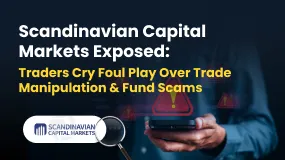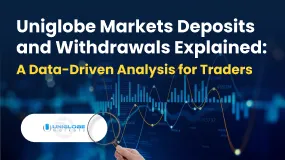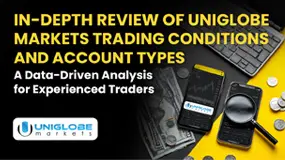简体中文
繁體中文
English
Pусский
日本語
ภาษาไทย
Tiếng Việt
Bahasa Indonesia
Español
हिन्दी
Filippiiniläinen
Français
Deutsch
Português
Türkçe
한국어
العربية
How to Identify and Avoid Pump-and-Dump Schemes in Online Trading
Abstract:Learn how to identify and avoid pump-and-dump schemes in online trading. This article provides a detailed guide to recognizing and protecting against these fraudulent practices.

Pump-and-dump schemes are a kind of fraud in which individuals or organizations intentionally raise the price of stocks they possess. They then sell it at the top, leaving new investors with substantial losses. This article investigates how these schemes work and how investors might defend themselves from fraud.
Understanding Pump-and-Dump Schemes
Pump-and-dump tactics were prevalent long before cryptocurrency. They began in the stock market. These strategies entail picking a low-liquid, low-cost asset and artificially raising its price via disseminating misleading information. This causes a purchasing frenzy. When the price reaches a high, the culprits sell their stock at the inflated price. This leads the stock price to plummet, leaving new investors with worthless shares.
The Pump-and-Dump Scheme's Mechanism
Historically, pump-and-dump tactics were carried out via cold phoning. The approaches have developed since the internet's inception. The method consists of two major stages:
· Pump: Fraudsters broadcast false or misleading information, frequently claiming insider knowledge, to persuade others to acquire shares. This disinformation generates fake demand, which drives up the stock price.
· Dump: Once the price has increased enough, the fraudsters sell their stock at the inflated price. As they sell, the increasing supply leads the price to fall, leaving prospective purchasers with substantial losses.

Small-cap stocks are especially susceptible to such schemes. Their prices are readily altered with a tiny bit of trading activity. The sudden flood of new purchasers might drastically raise the price. This enables the fraudsters to sell their shares before the price plummets profitably.
Identifying Pump-and-Dump Schemes
To avoid pump-and-dump schemes, investors should use a methodical approach to recognizing such scams:
· Treat Unsolicited Investment Offers with Suspicion: Be careful of investment proposals sent by unsolicited email, social media message, or remark. These communications are often sent by unknown individuals or in response to disinformation.
· Watch for Warning Signs: Promises of extraordinarily large profits, pressure to move immediately on an alleged opportunity, and assertions that the advice is based on proprietary or insider knowledge are all red flags of a pump-and-dump scam.
· Examine Advertisements: Consider including disclaimers when content providers on sites such as YouTube, Twitter, and Instagram mention certain stocks. Disclaimers may vary from no disclosure (fraudulent), imprecise disclosure (when remuneration is not explicitly indicated), and buried disclosures (hidden in tiny print). These techniques are common and should be treated with care.
· Conduct Thorough Homework: Before making any investment, do your homework. If you need more time or experience, consider employing mutual funds or other professional investing services. Avoid making judgments based on rumors or unwanted advice.
Pump-and-Dump Schemes
Pump-and-dump strategies may take several forms, each with its tactics:

· Classic Pump and Dump: This old strategy artificially inflates a stock's price via phone calls, phony news releases, and the sharing of alleged insider information.
· Boiler Room: In this scenario, a tiny brokerage business uses high-pressure sales methods and cold calling to sell as many shares as possible, raising the price. The brokers benefit from their holdings when the price reaches a certain level.
· Wrong Number Scheme: Scammers may claim to have dialed the wrong number to promote a particular stock and create interest.
Real-Life Examples of Pump-and-Dump Schemes
Consider the example of two investors, Luke and Lucas. Lucas buys 1,000 shares of a firm for $5 apiece and distributes false information about the company's imminent success. As a consequence, the stock price climbs to $30. Luke buys 1,000 shares at $30 apiece after seeing the price grow. Lucas then sells his shares at the top price, netting a significant profit. As the misleading information is disproven, the stock price plummets to $5, leaving Luke with substantial losses.
Avoiding Crypto Pumps and Dumps.
Pump-and-dump strategies also affect cryptocurrency investors. To prevent being victimized:
· Check listings: Check sure the coin is listed on key cryptocurrency exchanges and platforms, such as CoinMarketCap, which run checks to rule out obvious fraud.
· Analyze Startups: Consider the validity of the price rise. Actual developments or news about the company usually indicate a genuine increase.
· Study price charts: Look for continuity with the overall market trend. A significant increase without supporting news is a red indicator.
· Avoid Penny Stocks: Be wary of low-value currencies and young enterprises since they are more vulnerable to manipulation.
· Beware of Fake Startups: Scammers may promote non-existent or poorly supported projects. Check the project's technology model and development plan.
Conclusion
Pump-and-dump tactics take advantage of investor excitement and disinformation to manipulate stock prices for false gains. Investors should learn how these scams operate and look for warning indications. Conducting careful research and skepticism of unsolicited counsel are critical techniques for avoiding these fraudulent scams. Whether investing in regular equities or cryptocurrency, due investigation and skepticism are the strongest defenses against pump-and-dump frauds.

Disclaimer:
The views in this article only represent the author's personal views, and do not constitute investment advice on this platform. This platform does not guarantee the accuracy, completeness and timeliness of the information in the article, and will not be liable for any loss caused by the use of or reliance on the information in the article.
Read more

Scandinavian Capital Markets Exposed: Traders Cry Foul Play Over Trade Manipulation & Fund Scams
Does Scandinavian Capital Markets stipulate heavy margin requirements to keep you out of positions? Have you been deceived by their price manipulation tactic? Have you lost all your investments as the broker did not have risk management in place? Were you persuaded to bet on too risky and scam-ridden instruments by the broker officials? These are some burning issues traders face here. In this Scandinavian Capital Markets review guide, we have discussed these issues. Read on to explore them.

Uniglobe Markets Deposits and Withdrawals Explained: A Data-Driven Analysis for Traders
For any experienced trader, the integrity of a broker isn't just measured in pips and spreads; it's fundamentally defined by the reliability and transparency of its financial operations. The ability to deposit and, more importantly, withdraw capital seamlessly is the bedrock of trust between a trader and their brokerage. When this process is fraught with delays, ambiguity, or outright failure, it undermines the entire trading relationship. This in-depth analysis focuses on Uniglobe Markets, a broker that has been operational for 5-10 years and presents itself as a world-class trading partner. We will move beyond the marketing claims to scrutinize the realities of its funding mechanisms. By examining available data on Uniglobe Markets deposits and withdrawals, we aim to provide a clear, evidence-based picture for traders evaluating this broker for long-term engagement. Our investigation will be anchored primarily in verified records and user exposure reports to explain the Uniglobe Mar

In-Depth Review of Uniglobe Markets Trading Conditions and Account Types – An Analysis for Traders
For experienced traders, selecting a broker is a meticulous process that extends far beyond headline spreads and bonus offers. It involves a deep dive into the fundamental structure of a broker's offering: its regulatory standing, the integrity of its trading conditions, and the flexibility of its account types. Uniglobe Markets, a broker with an operational history spanning over five years, presents a complex case study. It offers seemingly attractive conditions, including high leverage and a diverse account structure, yet operates within a regulatory framework that demands intense scrutiny. This in-depth analysis will dissect the Uniglobe Markets trading conditions and account types, using data primarily sourced from the global broker inquiry platform, WikiFX. We will explore the Uniglobe Markets minimum deposit, leverage, and account types to provide a clear, data-driven perspective for traders evaluating this broker as a potential long-term partner.

KEY TO MARKETS Review: Are Traders Facing Withdrawal Delays, Deposit Issues & Trade Manipulation?
Did your deposits in KEY TO MARKETS’ forex trading fail to reflect despite numerous follow-ups with the broker? Are you facing margin lock up and withdrawal issues due to stuck limit orders? Do you find losses due to wide spreads on the KEY TO MARKETS login? Similar issues have been expressed by many traders online. In this KEY TO MARKETS review article, we will take a close look at the complaints. Read on!
WikiFX Broker
Latest News
GCash Rolls Out Virtual US Account to Cut Forex Fees for Filipinos
The 350 Per Cent Promise That Cost Her RM604,000
INZO Commission Fees and Spreads Breakdown: A 2025 Data-Driven Analysis for Traders
Garanti BBVA Securities Exposed: Traders Report Unfair Charges & Poor Customer Service
"Just 9 More Lots": Inside the Endless Withdrawal Loop at Grand Capital
Private payroll losses accelerated in the past four weeks, ADP reports
Core wholesale prices rose less than expected in September; retail sales gain
Consumer confidence hits lowest point since April as job worries grow
CFTC Polymarket Approval Signals U.S. Relaunch 2025
MH Markets Commission Fees and Spreads Analysis: A Data-Driven Breakdown for Traders
Currency Calculator




